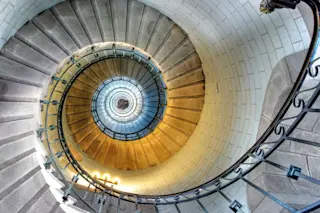“You are standing at the top of a flight of stairs. It leads into darkness. The stairs are not steep. And there is a banister...”
For the record, every flight of stairs I’ve ever fallen down has had a banister. Indeed, on several occasions the banister has been the problem, or at least has contributed to the damage. And yet I feel no fear.
“Down you go...one step...another step...everything’s fine and safe and secure...”
“Flight deck again, ladies and gentlemen. We’ll be starting our descent in a few minutes, so if you need to get up and use the restroom, this might be a pretty good time to just go ahead and do that.”
This might be a good time to mention that I’m sitting on an airplane, hurtling through the night à la Joni Mitchell toward points unknown, certainly points unimportant.
My eyes, it should be noted, are closed, ...















